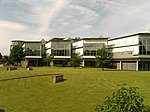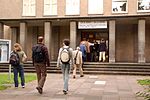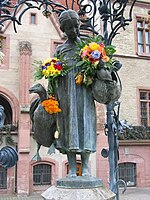Max Planck Institute for Experimental Medicine

The Max Planck Institute of Experimental Medicine (German: Max-Planck-Institut für Experimentelle Medizin) was a research institute of the Max Planck Society, located in Göttingen, Germany. On January 1, 2022, the institute merged with the Max Planck Institute for Biophysical Chemistry in Göttingen to form the Max Planck Institute for Multidisciplinary Sciences.It was founded in 1947 as the Medical Research Institution of the Kaiser Wilhelm Society (German: Medizinische Forschungsanstalt der Kaiser-Wilhelm-Gesellschaft), and was integrated into the Max Planck Society in 1948. It retained its original name until 1965. The research focus of the institute was on neuroscience: its research activities were organized into the Department of Neurogenetics, the Department of Molecular Neurobiology, and the Department of Molecular Biology of Neuron Signals.
Excerpt from the Wikipedia article Max Planck Institute for Experimental Medicine (License: CC BY-SA 3.0, Authors, Images).Max Planck Institute for Experimental Medicine
Hermann-Rein-Straße, Göttingen Weende / Deppoldshausen
Geographical coordinates (GPS) Address Nearby Places Show on map
Geographical coordinates (GPS)
| Latitude | Longitude |
|---|---|
| N 51.551111111111 ° | E 9.9372222222222 ° |
Address
Max-Planck-Institut für Multidisziplinäre Naturwissenschaften
Hermann-Rein-Straße
37075 Göttingen, Weende / Deppoldshausen
Lower Saxony, Germany
Open on Google Maps











